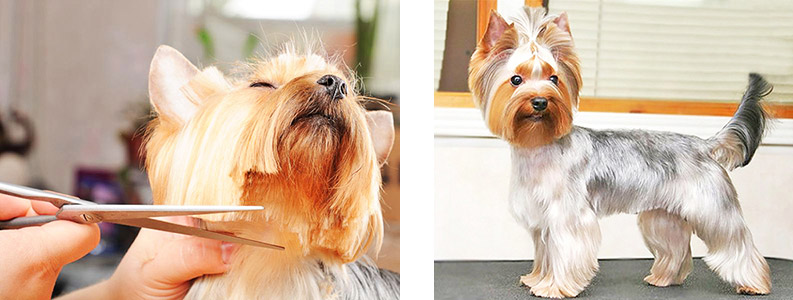Grooming is a comprehensive hygienic and aesthetic care routine for pets. It’s not just care but a whole beauty industry. Pet stylists, or groomers, maintain the skin and coat of the pet in good condition, remove tangles, trim nails, clean ears, and treat wounds.
Hygienic procedures include:
- Ear sanitization: The drier the air in the house, the more active the glands are, increasing the likelihood of earwax buildup. Hair in the ear canal hinders removal and can lead to serious problems.
- Teeth cleaning: The reason pets chew on shoes and furniture is to get rid of plaque. If plaque is present, it is removed with special paste that smells like meat or fish.
- Nail trimming: To prevent pets from scratching soft furniture or wallpaper, nails need to be trimmed. For some breeds, overgrown nails can deform the paws.
- Eye care: Eye discharge, especially if it has an unpleasant smell, should not be ignored.
- Anal gland care: Located near the anus, these glands can become inflamed when overfilled with secretion, leading to infection or abscesses.
Aesthetic grooming for dogs and cats includes spa services, coat care, and professional manicures. It also includes body art, fur coloring, teeth whitening, and rhinestone decorations.
How to properly bathe a pet?
What is dog grooming? First and foremost, it’s bathing and brushing. However, 80% of pet owners bathe their furry friends incorrectly. They buy cosmetic shampoo, apply it to the fur (at best to the withers, at worst to the head), and then rinse it off. As a result, the shampoo is wasted, and the animal remains unwashed.
Owners who understand what grooming is for dogs remember the golden rule: never use human shampoo. Otherwise, after several baths, the pet will develop dandruff and feel unwell. This is due to the difference in the skin’s pH balance. Human shampoos contain more aggressive ingredients. The normal pH for humans is 5.5, while for pets, it is 7-8. It is also not recommended to bathe pets more than once a week.
Correctly washing a puppy is a challenging task:
- First, brush the furry pet (for long-haired breeds).
- Dilute the shampoo with water in a separate container and mix well. It should be high quality to avoid allergic reactions (professionals choose “Iv San Bernard,” “BioGroom”).
- Apply the foam at least twice. If the dog has thick undercoat, it should be washed with a sponge, not by hand.
- Rinse thoroughly and, if needed, use conditioner.
- Dry the pet with a hairdryer while brushing its coat.
Nail trimming and grooming:
Dog grooming is one of the main processes, especially popular during the summer when long-haired breeds suffer from the heat. Additionally, with minimal fur, it’s easier to spot ticks and other parasites.
Depending on the tools used, the following procedures exist:
- Trimming: Artificial shedding or mechanical removal of old hair. It is recommended for breeds with coarse fur. This procedure is usually done by hand, making it costly. Plucking the fur is recommended for Schnauzers, Black Terriers, Fox Terriers, and American Cocker Spaniels.
- Blending: This procedure allows for smooth transitions from short fur to long fur areas.
- Clippercut and flatcut: Clippercut involves very short trims with clippers. Flatcut can be done with scissors to achieve a uniform coat length.
- Stripping: Removal of the fur using a special knife.
There is also hygienic trimming (around the eyes, ears), top knots (tying tail tips), and show trims (popular before exhibitions). Cat grooming helps reduce shedding and makes it easier to comb the pet.
While trimming a dog can be done at home, nail care should only be done by a professional. Since the nails are close to nerve endings, an owner can easily cause pain or infection. Nail trimming is a stressful process for pets, but professionals turn it into an enjoyable experience.
